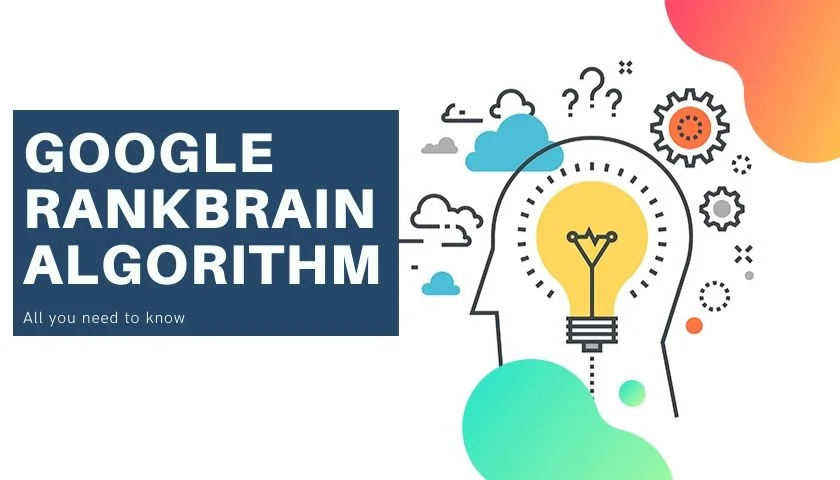Google’s RankBrain Algorithm: Game-Changer in SEO

In the ever-evolving landscape of search engine optimization (SEO), staying ahead of algorithmic updates is crucial for businesses striving to maintain visibility and relevance in the digital sphere. One such groundbreaking update that has reshaped the SEO landscape is Google’s RankBrain algorithm. Launched in 2015, RankBrain represents a significant leap forward in Google’s quest to deliver more relevant and accurate search results to users worldwide. In this comprehensive guide, we’ll delve into the intricacies of RankBrain, exploring its inception, impact on SEO practices, and the strategies needed to adapt and thrive in its wake.
What is the RankBrain Algorithm?
RankBrain is an artificial intelligence (AI) algorithm developed by Google to enhance the search engine’s ability to interpret and understand complex search queries. Unlike traditional algorithms that rely solely on predefined rules and keyword matching, RankBrain utilizes machine learning techniques to analyze and interpret the meaning behind user queries. By continuously learning from user interactions and feedback, RankBrain aims to deliver more contextually relevant search results, particularly for ambiguous or conversational queries.
Impact on Search Engine Results
Since its introduction, RankBrain has played a pivotal role in shaping search engine results, influencing how websites are ranked for specific queries. Unlike previous updates that primarily targeted specific aspects of SEO, such as content quality or backlink profiles, RankBrain represents a fundamental shift towards understanding user intent and delivering personalized search experiences.
Changes Required in On-Page and Off-Page SEO
The emergence of RankBrain has necessitated a reevaluation of traditional SEO practices, prompting businesses and SEO professionals to adapt their strategies to align with the evolving search landscape.
On-Page SEO Adaptations:
- Semantic Keyword Optimization: With RankBrain’s focus on understanding user intent, keyword optimization has evolved beyond simple keyword density. Instead, businesses need to focus on semantic keyword optimization, incorporating related terms and phrases that convey the context and intent behind user queries.
- User-Centric Content Creation: RankBrain prioritizes content that aligns with user intent and provides genuine value to searchers. As such, businesses must prioritize creating high-quality, informative content that addresses the needs and queries of their target audience.
- Natural Language Processing (NLP): Given RankBrain’s ability to understand conversational queries, businesses should optimize their content for natural language processing. This involves creating content in a conversational tone and addressing common questions and concerns related to their products or services.
Off-Page SEO Strategies:
- Quality Backlinks: While backlinks remain a crucial ranking factor, RankBrain places greater emphasis on the relevance and authority of linking domains. Businesses should focus on acquiring high-quality backlinks from authoritative websites within their niche to enhance their credibility and visibility in search results.
- Brand Building and Authority: RankBrain considers brand signals such as brand mentions and social signals as indicators of trust and authority. Investing in brand building initiatives and establishing a strong online presence can positively influence rankings and visibility in search results.
- User Engagement Metrics: RankBrain analyzes user engagement metrics such as click-through rates (CTR), bounce rates, and dwell time to evaluate the relevance and usefulness of search results. Businesses should focus on optimizing their website’s usability and user experience to improve engagement metrics and signal relevance to RankBrain.
Why Did Google Introduce RankBrain?
Google introduced RankBrain to address the growing complexity of user queries and improve the relevance of search results. Traditional algorithms struggled to interpret ambiguous or conversational queries accurately, leading to suboptimal search experiences for users. RankBrain’s machine learning capabilities enable Google to better understand the nuances of user intent and deliver more accurate and personalized search results.
Conclusion
Google’s RankBrain algorithm represents a paradigm shift in the world of SEO, emphasizing user intent and contextually relevant search experiences. Businesses and SEO professionals must adapt their strategies to align with RankBrain’s focus on semantic search and user-centric content. By prioritizing quality content creation, semantic keyword optimization, and user engagement, businesses can enhance their visibility and relevance in search results and stay ahead in the ever-evolving landscape of SEO.


Leave a Reply